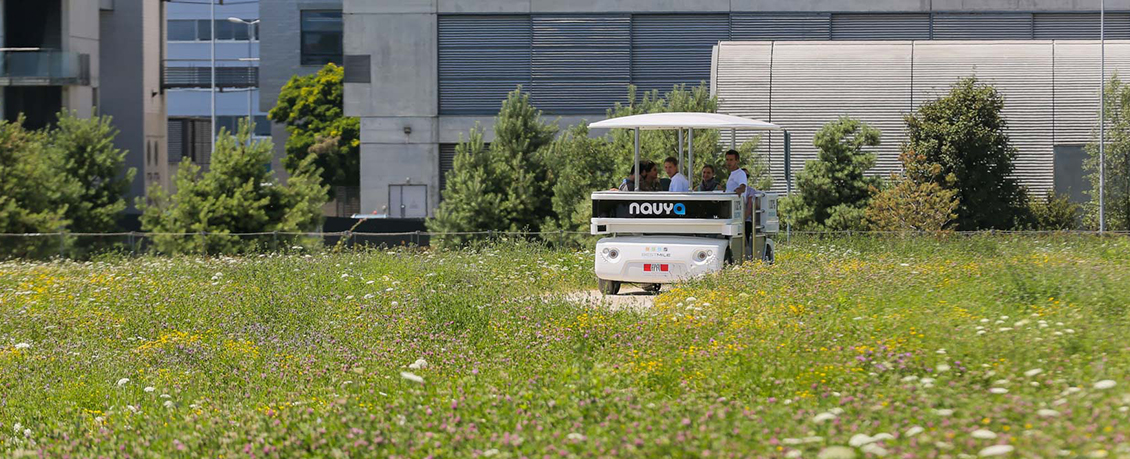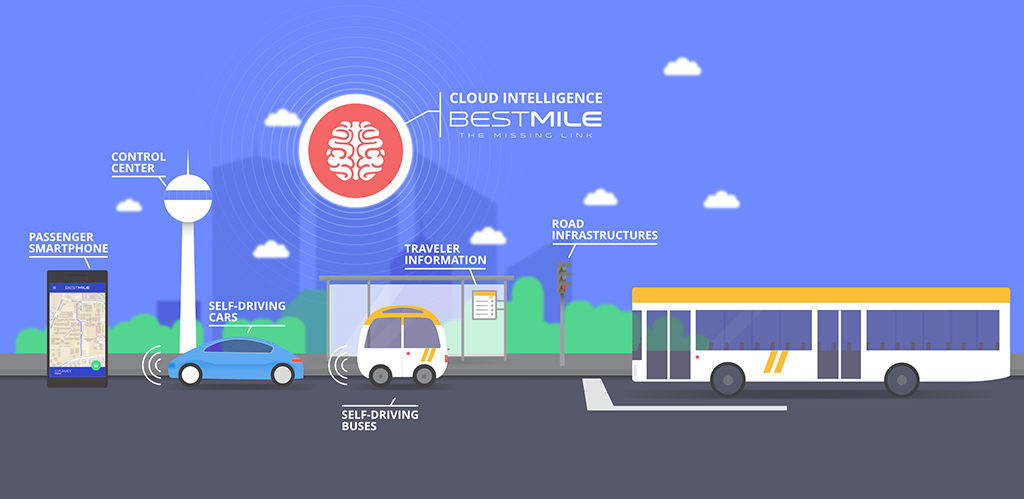
How Managing Autonomous Vehicles Will Make Cleaner, Healthy Cities
February 20, 2017 — Blog
Urban mobility is one of the most puzzling challenges for cities across the world. Demographic change and urban population expansion are putting pressure into cities saturated public transport infrastructures. At the same time, people are becoming increasingly aware that transportation is one of the biggest cause of greenhouse gas emissions, in addition to deteriorating the living conditions inside cities.
The growing weight of these concerns means that cities need to develop new strategies and adapt public transportation to meet evolving needs. The traffic jams that clog highways and plague many cities are only getting worse. This trend cannot continue indefinitely. Cities need to find a balanced urban mobility system that takes into account ecological issues without sacrificing citizen’s comfort. The current applied solutions of adding new capacity and multi-modal means of transport to match rising demand is not in-and-of-itself an efficient nor a sustainable answer in the mid- to long-term, however innovative and ecological the new means of transport are.
Although autonomous mobility seems to be one of the most promising transport innovations, autonomous vehicles do not, in themselves, present a complete, self-sufficient mobility service. As a stand-alone technology, they are not aware of trips being made by the cars around them, nor do they understand how they fit into an overall vision of the evolving transportation system they are a part of. On their own, they are not capable of responding to real-time demand or adhering to a schedule. With a lack of collective awareness and little understanding of the overall needs of the city, autonomous vehicles may lead to new mobility problems and further distance us from holistically managed urban mobility systems.

Autonomous Vehicles and the Future of Mobility
The future of mobility is not in autonomous vehicles per se, but in what they can offer once they’re operated and managed together.
In the long run, at the scale required to support thousands of autonomous vehicles, there is a need for a global fleet management platform to optimize traffic and ecological footprint. Autonomous mobility will then offer an innovative and coordinated transportation solution, both efficient and sustainable. Fleet management and optimization is about deciding in real time what each and every vehicle needs to do. Which vehicle can most efficiently make a pickup at point A, which vehicle needs to imperceptibly slow down in order to avoid traffic congestion and how to reroute on-the-go among the other things made possible by this kind of comprehensive and dynamic management. Such a platform is equivalent to an airport control tower; a crucial part of the equation as, without it, airplanes would never leave the ground, even if equipped with autopilot.
Fleet optimization and management platforms enable real-time coordination and optimization of the multi-modal urban mobility system at large, if not global scale, accelerated pace and with unrivalled efficiency. Fleet management enables real-time data sharing and analytics between operators, vehicles and users. The transportation system is able to adjust in real time to the highly variable demand in and out of the urban area. An active fleet optimization and management platform optimizes the fluidity of traffic, removes congestion issues and thus air pollution hotspots. At the same time, the public transportation system could adapt to user patterns, rather than users adapting to a set schedule.
A global coordination and real-time optimization in public transportation is not only essential, it’s also cost effective. Take for example the Transport Coordination Centre (TTC) set up in London during the 2012 Olympic Games. Its goals were to facilitate active sharing of information and coordinate incident response procedures between multi-modal transport providers, existing Traffic Control Centres, Games Organizers and their stakeholders. According to Arup/Transport for London (Transport Coordination Centre Evaluation, December 2012) if the TCC were to be permanently implanted GB £ 4.4 million could be saved in London only. The TTC is a human materialization of the principle of fleet optimization applied to urban mobility.
An innovative holistic approach to passenger transportation removes the tension between sustainability, a requisite for city institutions, and quality of services for the demanding citizen. Cities need to understand what must accompany smart urban mobility solutions beyond the “hardware” of infrastructure and vehicles themselves. Technologies are ready to be deployed, it solely needs the awareness and the will of governments to make them into a global reality.
